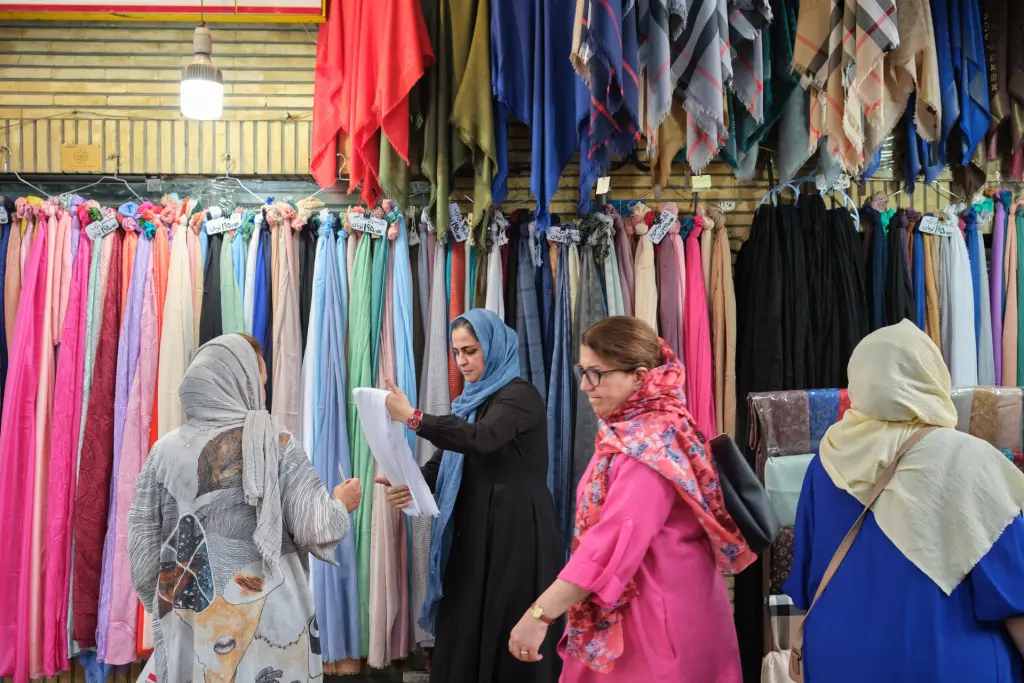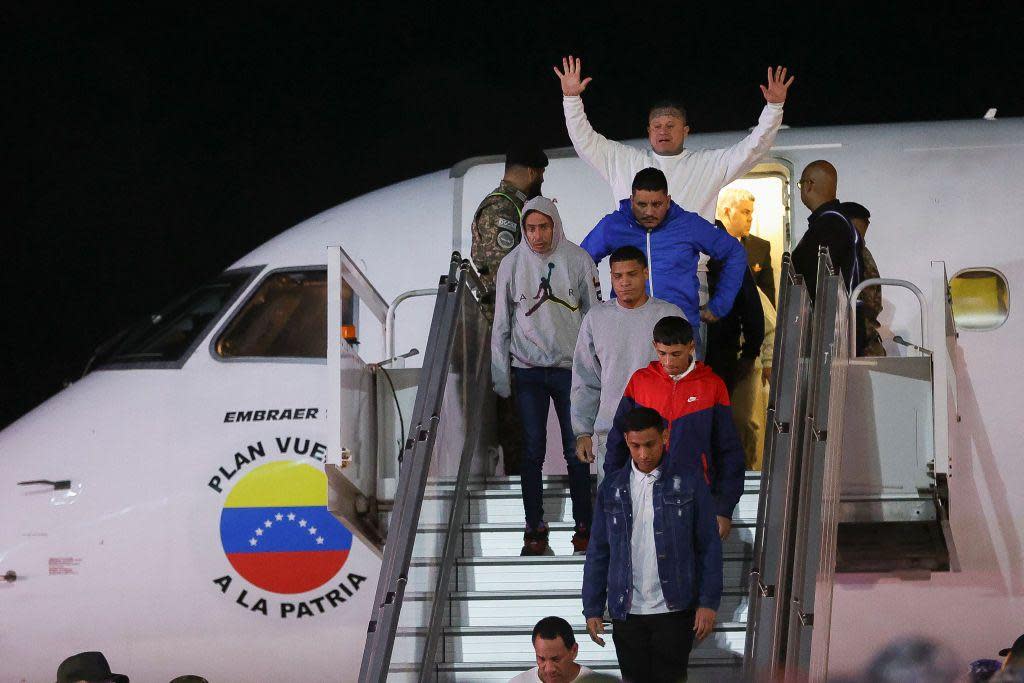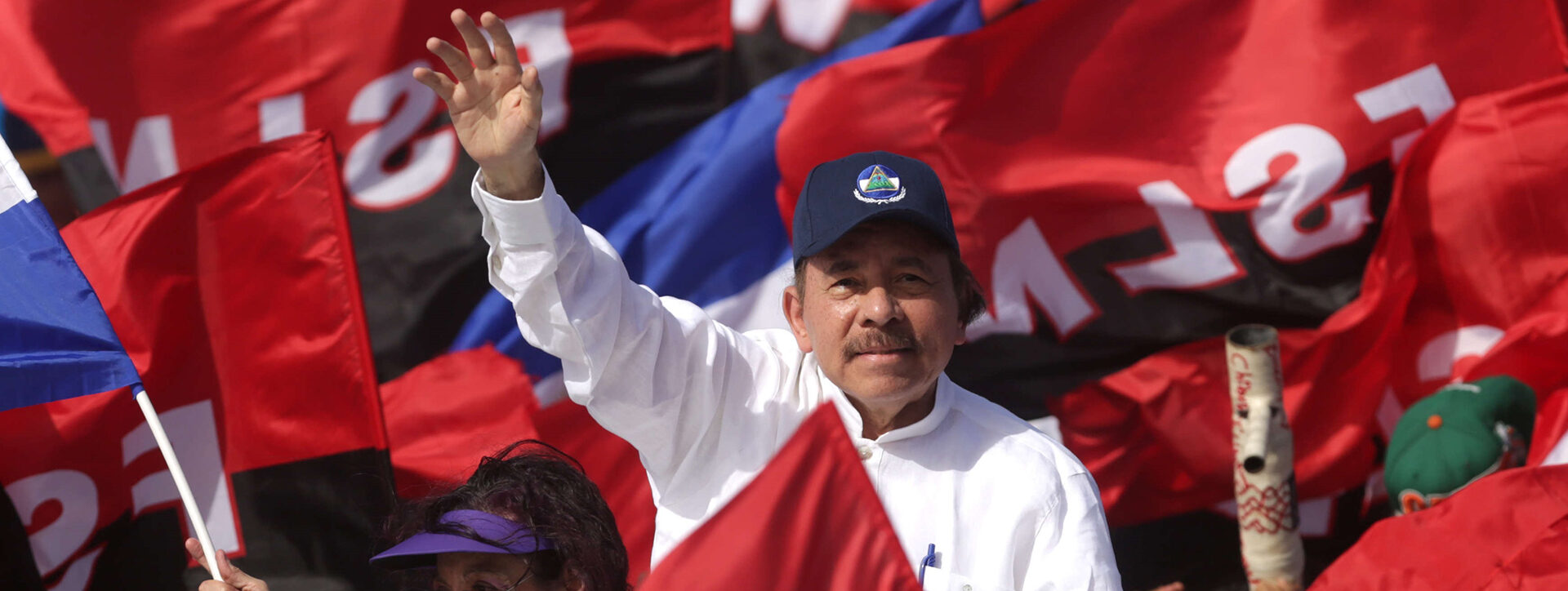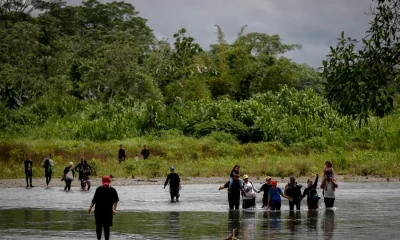International
The sale of hijabs skyrockets in Iran due to the fear of the ‘Police of morality’

The veil seller Mahshid is doing well. The sale of hijabs has skyrocketed in his store in northern Tehran since the return to the streets of the ‘Police of Morals’ to reimpose the use of Islamic clothing, a situation that other businesses in the sector are also experiencing.
Numerous women look and touch veils, ask for prices and several wear clothes at the Mahshid store located in Tajrish Square, a business that sank after the death of Mahsa Amini in 2022 after being arrested for not wearing the hijab well.
“Many women stopped shopping and wearing the veil then. Sales were reduced to less than half,” he tells EFE Mahshid, who at 34 years old has had covered hair and has been selling hijabs for a decade.
“But with the return of the ‘Police of Morals’ to the streets, sales have recovered,” says this merchant who sells veils from 1,350,000 rials (2.5 euros) and has them in all colors and prints.
Sales have not fully recovered and Mahshid now dispatches 75% of what he sold before the death of the 22-year-old Kurdish girl, which provoked unprecedented protests against the Islamic Republic in which 500 protesters died in state violence.
After Amini’s death, many Iranians stopped wearing the Islamic veil as a gesture of social disobedience to a political system that they consider oppressive and discriminatory, especially against women.
To reimpose the use of the veil, the Iranian authorities launched a campaign of massive repression with the confiscation of vehicles, prison sentences and even lashes, Amnesty International denounced.
In vain. Many Iranians have continued without covering their hair and that is why in mid-April the authorities deployed the ‘Moral Police’ back on the streets of the country and since then arrests women who do not wear a veil, a mandatory garment in the country since 1983.
Afshin, a veil seller in a shopping center in northern Tehran, has also seen a significant increase in sales and believes that it is because of the fear of the dreaded police vans in which they put women sometimes forcibly discovered.
“Sales have improved in the last three months and I think it is due to the fear that many women feel about the violent arrests of girls who do not wear the veil,” this 36-year-old Iranian tells EFE.
Afshin sold 50 veils on weekdays and about 100 on holidays until Amini’s death in September 2022, after which sales fell to about 50 pieces per week.
“Now he has recovered a little. It’s not like three years ago, but we sell about 30 veils a day,” he explains.
One of the women who stopped wearing a veil in 2022 and has now covered her hair again is Melika, a 39-year-old housewife from Tehran.
“I stopped using the hijab as a form of solidarity with the young women who have paid very dearly for the fact of removing the veil,” he tells EFE.
“But after seeing the violent arrests of girls in the streets with the return of the police of morale, I began to use it in places where I know there are police vans,” he continues.
After two years without buying a veil, Melika bought one a few days ago: “It makes me feel bad to spend the money on something I don’t like and that they are forcibly imposing on me.”
Iran is now waiting for President-elect Masud Pezeshkian to take office at the end of the month and one of the great doubts is whether he will relax the veil policy, as he hinted in the electoral campaign.
“I don’t think he will, he has no power to do it,” a newly licensed psychologist tells EFE who doubts that the new reformist president will bring changes, a widespread opinion among young Iranians.
If so, the veil seller Mahshid will continue to do well.
International
Trump urges Putin to reach peace deal

On Monday, U.S. President Donald Trump reiterated his desire for Russian President Vladimir Putin to “reach a deal” to end the war in Ukraine, while also reaffirming his willingness to impose sanctions on Russia.
“I want to see him reach an agreement to prevent Russian, Ukrainian, and other people from dying,” Trump stated during a press conference in the Oval Office at the White House.
“I think he will. I don’t want to have to impose secondary tariffs on Russian oil,” the Republican leader added, recalling that he had already taken similar measures against Venezuela by sanctioning buyers of the South American country’s crude oil.
Trump also reiterated his frustration over Ukraine’s resistance to an agreement that would allow the United States to exploit natural resources in the country—a condition he set in negotiations to end the war.
International
Deportation flight lands in Venezuela; government denies criminal gang links

A flight carrying 175 Venezuelan migrants deported from the United States arrived in Caracas on Sunday. This marks the third group to return since repatriation flights resumed a week ago, and among them is an alleged member of a criminal organization, according to Venezuelan authorities.
Unlike previous flights operated by the Venezuelan state airline Conviasa, this time, an aircraft from the U.S. airline Eastern landed at Maiquetía Airport, on the outskirts of Caracas, shortly after 2:00 p.m. with the deportees.
Interior Minister Diosdado Cabello, who welcomed the returnees at the airport, stated that the 175 repatriated individuals were coming back “after being subjected, like all Venezuelans, to persecution” and dismissed claims that they belonged to the criminal organization El Tren de Aragua.
However, Cabello confirmed that “for the first time in these flights we have been carrying out, someone of significance wanted by Venezuelan justice has arrived, and he is not from El Tren de Aragua.” Instead, he belongs to a gang operating in the state of Trujillo. The minister did not disclose the individual’s identity or provide details on where he would be taken.
International
Son of journalist José Rubén Zamora condemns father’s return to prison as “illegal”

The son of renowned journalist José Rubén Zamora Marroquín, José Carlos Zamora, has denounced as “illegal” the court order that sent his father back to a Guatemalan prison on March 3, after already spending 819 days behind barsover a highly irregular money laundering case.
“My father’s return to prison was based on an arbitrary and illegal ruling. It is also alarming that the judge who had granted him house arrest received threats,” José Carlos Zamora told EFE in an interview on Saturday.
The 67-year-old journalist was sent back to prison inside the Mariscal Zavala military barracks on March 3, when Judge Erick García upheld a Court of Appeals ruling that overturned the house arrest granted to him in October. Zamora had already spent 819 days in prison over an alleged money laundering case.
His son condemned the situation as “unacceptable”, stating that the judge handling the case “cannot do his job in accordance with the law due to threats against his life.”
-

 Central America5 days ago
Central America5 days agoNicaragua denounces Costa Rica’s position in SICA as aligned with foreign interests
-

 Central America5 days ago
Central America5 days agoNicaragua’s new judicial law consolidates power in Ortega and Murillo’s hands
-

 Central America5 days ago
Central America5 days agoPanama’s president declares Darién gap ‘closed’ amid sharp drop in migrant flow
-

 International3 days ago
International3 days agoSon of journalist José Rubén Zamora condemns father’s return to prison as “illegal”
-

 International5 days ago
International5 days agoMarco Rubio warns Venezuela against military action against Guyana
-

 International3 days ago
International3 days agoMiyazaki’s style goes viral with AI but at what cost?
-

 Central America2 days ago
Central America2 days agoPanama police clarifies that Interpol alert for Martinelli is still pending
-

 International2 days ago
International2 days agoDeportation flight lands in Venezuela; government denies criminal gang links
-

 Central America16 hours ago
Central America16 hours agoU.S. Homeland Security Secretary urges Mexico to strengthen Guatemala border
-

 International16 hours ago
International16 hours agoTrump urges Putin to reach peace deal
-

 Central America16 hours ago
Central America16 hours agoPanama grants Martinelli 72-hour extension to travel to Nicaragua
-
Central America4 days ago
Nicaragua revokes legal status of 10 more NGOs, bringing total to over 5,600















